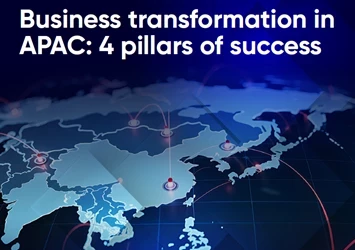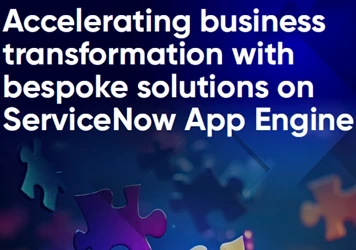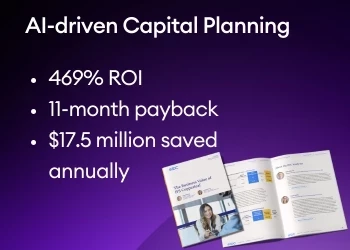"The world of AD 2014 will have few routine jobs that cannot be done better by some machine than by any human being” wrote noted science fiction author and biochemistry professor Isaac Asimov in the New York Times more than 50 years ago as he expressed his impressions of the expanding world of technology following a visit to the New York World’s Fair in 1964. “Mankind will therefore have become largely a race of machine tenders.” While Asimov’s prediction seems mildly premature, it still represents a likely future.
“Mankind will therefore have become largely a race of machine tenders.”
In the mid-1960s when Asimov made this statement, the transition from mechanical to digital technology was well underway but not until the 1980s would personal computers start populating homes and offices in any serious manner. Now nearly everyone has a computer in their pocket or purse which can also place and receive phone calls, emails, and text messages; take digital photos; and play videos as the Information Age quickly fades into the Digital Age where eData rules and many routine transactions involving paper and human intervention will soon be considered as antiquated as dialing someone’s phone number instead of saying their name.
Key components of the Digital Age including The Cloud, Big Data, Data Mining, Predictive and Prescriptive Analytics, Machine Learning, AI, IoT, human-assisted and autonomous RPA, and Blockchain still mean little to the general public but are positioned to impact nearly every major commercial enterprise on the planet in the next couple decades. In depth discussions of these topics are currently cloistered in round table exchanges at technical conferences where most attendees understand the general concepts behind these technologies but have yet to experience their full integration into business operations – The Big Convergence!
The Big Convergence is when the full power of the Digital Age will be unleashed. This is when fortunes will be won and lost in the M2M (machine-to-machine) economy and those who decide to implement digital technologies will be the only players in the game.
The Big Convergence is when the full power of the Digital Age will be unleashed.
Paul Miller, CEO and Founder of the Digital Workplace Group and author of The Digital Workplace, urgently advises that “organizations need to invest in their Digital Workplace and they need to do it fast. The changes are already happening – don’t be reactive – act now.”
Everyone understands the power of a computer to collect, collate, and process information and report the results for human consumption. They inform our judgment, guide our decision-making, and expedite our ability to manage, evaluate, and act upon information. The new technologies involved in the Digital Age take this to a whole new level.
The Digital Age will see the elimination of the need for human involvement in routine and repetitive processes, evaluation of circumstances and judging what actions to take, and even implementation of those actions. Human involvement will often be completely removed from the equation. And, as the business community speeds into the Digital Age, the types and number of business operations that can be automated will increase exponentially. Given that automated operations are generally faster, more reliable, and less expensive, this will provide a significant competitive advantage to those businesses that adopt this technology.
Consider Enterprise Alpha, a large imaginary corporation with thousands of imaginary employees. The executive team has fully embraced digital technology and decided to adopt a “smart workplace” approach. They set up a Gazelle Team, named for one of the fastest land animals on earth, to implement the technology. Additionally, they approved a phased template for implementation beginning with a complete upgrade of their digital infrastructure to accommodate digital systems integration and Big Data cloud storage with analytics capability accompanied by a leading edge immune system approach to cybersecurity. This lays the foundation for Phase 2, migration of paper-based procedures and workflows onto the digital platform, deployment of IoT devices including human-aided and autonomous robotics, and a data mining effort that feeds into predictive and prescriptive analyses and machine learning processes. Phase 3 moves the financial sector solidly into the Digital Age with implementation of a distributed ledger or Blockchain platform to manage transactions with vendors and contractors. Phase 4 would refine all elements of the digital system and expand the Blockchain platform to include additional internal transactions such as supply chain tracking, procurement, and inventory as well as external transactions with customers as the technology becomes more standardized and familiarity with it grows in the public sphere.
Big Data Cloud Storage
Big Data provides the substance for driving many of the value-added mechanisms of digital technology. The Enterprise Alpha operation plans to collect a plethora of valuable information or Big Data about the status and operations of its entire enterprise which will be retained in The Cloud. The big three cloud storage options—Amazon S3, Google Cloud, and Microsoft Azure—were considered along with Teradata Integrated Big Data Platform which was ultimately selected. As all options were scalable and provided a similar range of data warehouse capabilities, the best option for Enterprise Alpha was Teradata Integrated Big Data Platform (www.teradata.com) due to the fact that it has the option of adding Teradata Analytics Platform. This integrated close relationship between Big Data storage and the analytics platform will facilitate the speed and ease of generating useful analytics.
Digital Systems Integration Platform
The digital systems integration platform serves as the neural backbone of the smart workplace. It is key to the effectiveness of a digital workplace and must seamlessly manage the digital interfaces and collection of data through real-time monitoring of all key equipment and IoT devices the organization deploys; control and monitor the entire robotic workforce; and coordinate the cross-device deployment of information to the workforce at all levels and functional areas throughout the organization. It must also provide an efficient means for distribution of analytics to human as well as robotic or machine recipients.
The Enterprise Alpha Gazelle Team evaluated a number of digital systems integration platforms and decided on the Informatica (www.informatica.com) IICS (Intelligent Cloud Services) solution. Infomatica Cloud Data Integration works with a variety of cloud data warehouses and, according to information on its website, provides “support for high-performance, scalable analytics with advanced transformations; enterprise-grade asset management; and sophisticated data integration capabilities such as mass ingestion, advanced pushdown optimization, and advanced workload orchestrations.”
Procedures and their associated workflows will be hosted on Gnosys, a digital e-procedure platform that facilitates integration with AR capabilities, transitioning to robotic automation, and dashboard reporting of analytics.
Cybersecurity
A CNN video report Great by Design: Cybersecurity suggests that cybercrime will cost the world $8 trillion by 2022. As a precautionary measure, the Gazelle Team chose to upgrade their cybersecurity by implementing Darktrace (www.darktrace.com), a disruptive machine learning technology that mimics the human immune system.
"The human immune system has at its core an innate sense of self,” states Darktrace CEO Poppy Gustafsson. “By knowing what is you, it can than identify what is other. Our bodies will then adapt and mount a defense against that bacteria or virus and write the code of that defense into our immunological memory.”
Dave Palmer, Darktrace Director of Technology, adds, “the digital immune system is genuinely inspired by the human immune system. Once we have smart systems that can learn what’s normal and spot the strange or unusual, that’s great! We can tell human beings about attacks as they are immerging inside their business.”
Darktrace, the creator and primary provider of digital immune system cybersecurity technology, protects the data systems and operational integrity of the Drax Power Station in Yorkshire, UK. “More often than not that anomalous behavior can be explained but when it isn’t we’re able to deal with that incident immediately, take it off the network, find out where the problem was, fix it so that it doesn’t happen again,” explains Martin Sloan, Group Head of Security, Drax.
Rather than identify and log the millions of types of threats that the typical IT network faces, the fundamental technology underlying Darktrace identifies anomalous behavior impacting a digital network, categorizes the behavior as self (friend) or other (foe) and deals with it appropriately to keep the network operating normally.
Artificial Intelligence
“The convergence of big data with AI has emerged as the single most important development that is shaping the future of how firms drive business value from their data and analytics capabilities,” proclaims Randy Bean, CEO of NewVantage Partners, in How Big Data is Empowering AI and Machine Learning at Scale in MIT Sloan Management Review.
It is important to understand that this is not human-level AI or “strong AI” which is predicted by AI researchers Vincent C. Müller, President of the European Association for Cognitive Systems and Nick Bostrom, Founding Director of the Future of Humanity Institute, to be functional around 2050 and not refined as “superintelligence” for another 25 years after that. It is AI as it currently exists in the areas of predictive and prescriptive analytics, recommendation engines, machine learning, and natural language generation.
“At a basic level,” explains staff writer Reinhardt Kruse in Investor’s Business Daily, “artificial intelligence is the use of computer algorithms to attempt to replicate the human ability to learn, reason and make decisions.” To achieve this result, Enterprise Alpha will leverage the capabilities of AI in several important areas.
Ultimately, the benefits of capturing big data surface in the process of data mining which employs software tools to reveal patterns, trends, relationships, and “weak signals” in the data. But data mining alone doesn’t provide the benefit. The benefit comes from the application of the results of data mining in predictive or prescriptive analytics and machine learning which is where AI helps automate the reshaping or streamlining of business processes and operations based on the patterns and relationships revealed by the data mining. As mentioned earlier, the Gazelle Team selected Teradata Analytics Platform to serve this function. “Teradata is providing a package that solves the problem enterprises have of stitching together all the required software to manage an analytical ecosystem from multiple sources and vendors,” writes Chris Preimesberger, eWEEK Features & Analysis Editor in an article entitled “Teradata Adds Sophisticated New Capabilities to Its Analytics.”
Predictive analytics leads to the identification of opportunities or problems when they can still be leveraged for advantage or remedied, respectively. The results of such analyses inform automated and human interventions ranging from preventative maintenance processes and production efficiencies to procurement transactions. Prescriptive analytics uses big data in an attempt to quantify the effect of future decisions while those decisions are still in the formative stage. Both predictive and prescriptive analytics could present suitable rationale for continuing existing processes, implementing modifications or determining an entirely different path.
Machine learning allows computer algorithms that drive robotics to learn from previous computations. As these algorithms learn, they improve their ability to evaluate situations, make decisions, and control processes thus institutionalizing the concept of continual improvement.
Because of the need for specialized expertise in the area of data mining, predictive and prescriptive analytics, machine learning, and AI, the Gazelle Team has decided to contract this service from qualified vendors until it becomes clear that moving these operations in-house will prove cost effective.
Internet of Things
The workforce will be provided with and trained on a variety of IoT (Internet of Things) devices from smart vests with vital signs monitors and specialized sensors to AR (augmented reality) enhanced smart safety helmets which will allow easy access to real time equipment operational stats, warnings when nearing or entering hazardous environments, maintenance and repair procedures, and real time communications with subject matter experts.
Fuel.Tech (www.fuel.tech.com), a leading developer of software and training that makes AR devices more user friendly and useful, explains on its website that “AR overlays the real world with graphics, animation and sounds through wearables” like AR enhanced smart safety helmets.
Daqri (www.daqri.com), a respected manufacturer of AR enhanced smart helmets and goggles, proclaims on its website that “users are provided with unprecedented levels of information about the world around them for the most precise display and tracking possible.” Hands-free access to the digital network via these helmets will provide Enterprise Alpha workers a slate of capabilities readily available for operating more safely and effectively in a variety of challenging work environments.
The process of creating an AR enabled workplace begins with mapping the real workplace into a digital VR (virtual reality) system. Then any desired segment of the VR system can “overlay” the real world and be viewed, as mentioned above, with AR devices that present the desired elements of the virtual workplace along with procedures, information or real-time analytics to workers via a smart helmet or other IoT devices.
Enterprise Alpha management believes that IoT technology will contribute to fewer safety incidents and shorter downtimes for equipment maintenance and repair, facilitate training, and support more consistent operations throughout the enterprise, all of which translate to more efficient and safer use of personnel and equipment.
Robotic Process Automation
Enterprise Alpha produces consumer products and operates an assembly line. The installation of autonomous RPA (Robotic Process Automation) devices will help reduce delays and quality exceptions while increasing output by making 24/7 operations affordable.
Use of UiPath Orchestrator (www.uipath.com), a digital RPA platform, will allow for the management, control, and monitoring of attended or unattended automation.
The company also plans to acquire a fleet of Percepto (www.percepto.co) Sparrow industrial grade, weather-proof drones which will be programmed to perform regular inspections by flying a BVLOS (Beyond Visual Line Of Sight) pattern over and around facilities to look for maintenance problems, identify safety or security issues, and perform a full range of detection processes. Percepto Sparrow drones were selected because of their durability in severe weather conditions; autonomous safety layer that even if communications are cut, the drone still understands its environment and how to react; and the weather resistant and ground base which serves as a landing port, charging station, communications hub, and shelter. The Percepto CMS (Cloud Management System) allows for easily managing the fleet of drones.
Data and video acquired during the flights will be fed into the digital network and stored in The Cloud for real time review and comparison. Trik (www.gettrik.com), a capable drone mapping and 3D reporting tool, as reported on its website, “automatically turns drone photos into a 3D model” allowing users to “compare structural changes and create maintenance plans.” Directing the drones to fly the same pattern for each inspection, a tool like Trik can be employed to identify and flag anomalies for human review or assignment to a specialized drone or facilities personnel for further inspection.
Deployment of digital technology will not be limited to field or facility operations. Office and backroom operations will employ automated processes as well. The Gazelle Team analyzed office and backroom operations and determined that implementing a human-assisted RPA approach made sense.
According to a KMPG report entitled Delivering Value in Procurement with Robotic Process Automation, “The procurement function has a number of time-consuming, manual processes that are ideally suited for bots created with robotic process automation (RPA) technology.” Bots, the post explains, “are sophisticated software that lays on top of an organization's IT systems to manipulate existing application software in the same way that a person today processes a transaction or completes a process.”
KMPG also indicates that bots can track contract use over time, create scorecards for strategic suppliers, scan staff emails to identify which suppliers have the largest number of interactions, and monitor supplier risk across a number of categories in a fraction of the time it would take to do these tasks manually. “Using procurement bots for accounts payable can help reduce invoice reconciliation errors that can at times lead to remittance errors.” And that represents only a fraction of the jobs bots can do to facilitate the procurement process by increasing efficiencies and lowering costs.
Ultimately, KMPG reports, “CPOs should also consider the ability of RPA to help the organization move from reactive to predictive insights and to take up the many low-value tasks that distract highly skilled resources, preventing them from strategic work.”
Blockchain
To streamline financial transactions, the Gazelle Team will establish smart contracts with all vendors and contractors. They plan to implement smart contracts via distributed ledger technology also known as Blockchain and will implement this technology using the Ethereum (www.ethereum.org) Blockchain App Platform. According to its website, “Ethereum is a decentralized platform that runs smart contracts: applications that run exactly as programmed without any possibility of downtime, censorship, fraud or third-party interference.”
This will virtually eliminate “net 30 days” from all contracts. No invoices, no signatures, no check runs. As soon as the system verifies that services have been rendered and all conditions of the contract have been met, payment will immediately be authorized and funds sent via bank-to-bank transfer.
Blockchain technology automates the elements of a contractual agreement embedding trust in the transaction by isolating its elements from human interference. “The important thing to remember about Blockchains is that they make it harder for digital data to go rogue,” says Robbie Gonzalez, senior writer for Wired in the online video The Blockchain Explained.
Andrew Meola, a former financial reporter, writing in Business Insider article The growing list of applications and use cases of blockchain technology in business & life, cites uses of blockchain technology in regulatory compliance and audits, insurance, peer-to-peer transactions, supply chain management, healthcare, real estate, media, energy, record management, voting, taxes, and the list goes on. “The technological potential of blockchain is immense, and its uses will only grow with time,” states Meola.
Through its commitment to maintaining a sustainably profitable role in the market in the future, the Enterprise Alpha executive team pursued a multiyear effort to implement a full spectrum approach to digital technology. It now gathers, analyzes, and acts upon analysis of data to prevent downtime, improve safety, continue efforts to streamline processes, and elevate productivity. Operational costs were reduced by automating routine and repetitive processes which shifted the focus of the workforce to the performance of tasks that required human manipulation or intelligence and providing employees the support needed to make their efforts safer and more productive.
In the short term, Enterprise Alpha faces the challenge of amortizing the investment in the new technology through increased efficiencies and productivity. But as Enterprise Alpha approaches its breakeven point, it will see sustainable gains that competitors will be unable to achieve unless they go digital as well.
This is where the story of digital technology typically ends. But there is more to a successful implementation then simply installing the technology. Adapting new technology to existing workflows may represent a problem and not produce optimal results if existing processes are not well-designed and efficient.
Therefore, to ensure operational excellence and to facilitate the implementation of digital technology, the Enterprise Alpha executive team made the wise choice of taking the year before implementing digital technology to work with Effective Managers, Inc. (www.effectivemanagers.com) to fine-tune its workflows and management processes, including the authority and accountability framework, communications and feedback channels, and a complete overhaul of policies and procedures. Dwight Mihalicz, President and Founder of Effective Managers Inc., explains that an authority and accountability framework “enables clarity of delegation so that personnel are aware of their accountability and that their authority is consistent with the actions of others within the organization.”
It also upgraded its training program to ensure a solid connection between tasks, competencies, learning experiences, and evaluations. It migrated the development of training materials onto a digital platform and developed the ability to push lessons out over mobile IoT devices to ensure easy access by the workforce. In other words, Enterprise Alpha prepped the business for a major organizational, cultural, and operational overhaul. This ensured that the workforce was prepared and the new digital technologies were laid over a solid operational foundation, thus improving the chances for achieving a positive ROI from implementation and, ultimately, facilitating the potential development of new, more efficient operational models.
While Enterprise Alpha may represent a fictional operation with thousands of fictional employees, the products and services mentioned in this article are real and currently available. They have been included in this article not as a recommendation but to offer a starting place for research on the topics this article addresses. The fact that so many relevant products are currently on the market should serve as a strong indicator that the Digital Age with all its new technology is rapidly infiltrating the business community and society.
Humans will still be needed to plug the machines in and turn them on …
The Big Convergence brings together The Cloud, Big Data, Data Mining, Predictive and Prescriptive Analytics, Machine Learning, AI, IoT, human-assisted and autonomous RPA, and Blockchain while opening the door for other digital technologies not yet conceived. This presents both opportunities and challenges for business leaders, workers, and society. Many jobs that have existed since the Industrial Revolution will simply go away. New jobs will develop and others will evolve. But as Issac Asimov hinted in his 1964 prediction, the simple truth remains that while machines may run on their own, humans will still be needed to plug the machines in and turn them on.




















